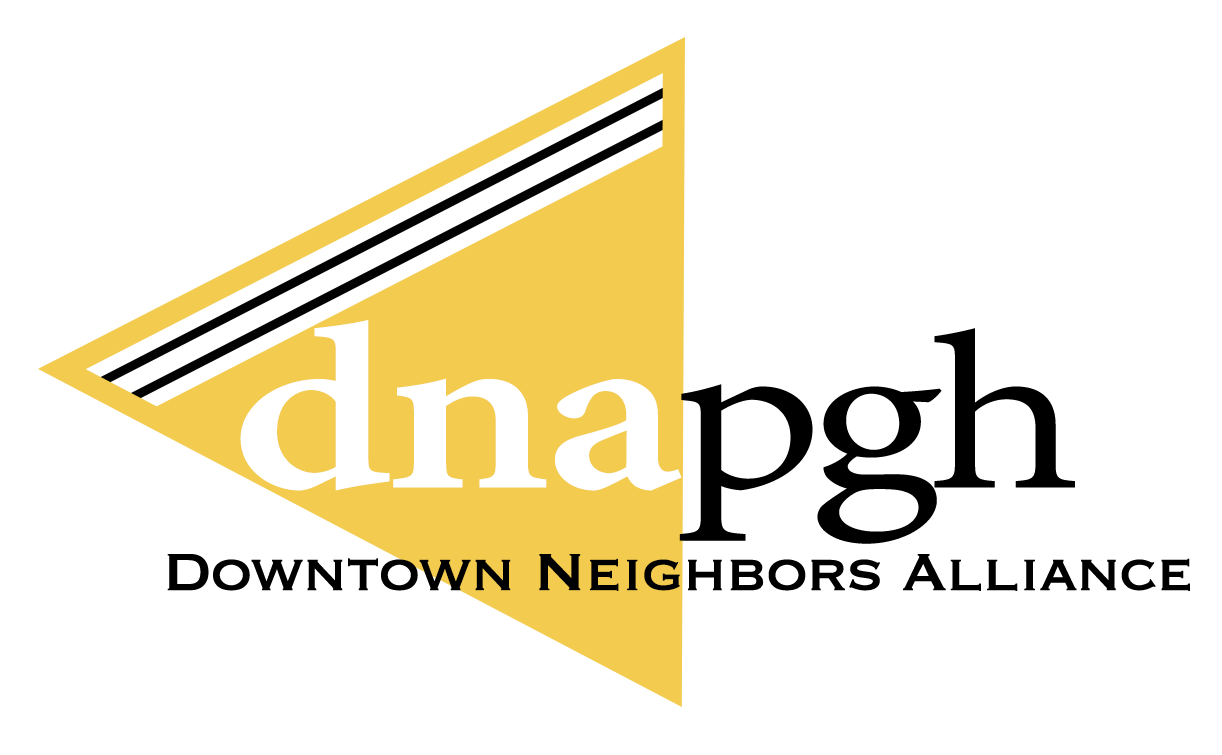$600 Million to Revitalize Downtown Pittsburgh: The DNA’s Opinion
Written by Christine Julia Dingzon
The revitalization of Downtown Pittsburgh is underway, and the future is looking brighter than ever. Fueled by a transformative $600 million plan, this ambitious 10-year initiative is supported by the Allegheny Conference, Allegheny County, The Office of Mayor Gainey and a broad coalition of public and private partners, including the DNA. With substantial funding from the state, this plan aims to reshape Downtown Pittsburgh into a more welcoming and vibrant urban hub. The project will kick off with key developments focused on creating a balanced, dynamic downtown–a place where both residents and visitors can thrive and enjoy everything our city has to offer.
One of the key projects in the revitalization plan is the conversion of Downtown Pittsburgh’s office buildings into residential spaces. For years, our downtown has been predominantly geared towards office use, a model that worked for a time but has created an imbalance–magnified during the pandemic. When Covid-19 hit, the workforce in the Golden Triangle nearly disappeared, and though it rebounded to about 60%, that’s a misleading figure due to many workers who only come to work one, two or three days a week. It’s clear that we need to shift our focus. By transforming these office spaces into residential units, we can bring more people to live in the heart of the city, which will help bring back the vitality that downtown needs to thrive long-term.
A key aspect of this plan is improving the connectivity between neighborhoods. One of the major projects is the renovation of the underpass linking Downtown Pittsburgh to the Strip District. This renovation will make it easier and safer to travel between these two vibrant areas, bettering the overall flow of people throughout the city. The revitalization of the underpass is not just about improving pedestrian access, but also about stimulating business activity on both sides of the district, creating a more integrated and dynamic downtown experience.
Another key focus of the plan is Point Park University, which occupies a significant portion of Downtown Pittsburgh. As a cornerstone of the city’s educational and cultural landscape, it’s vital that the university receives the financial support to make its campus more accessible to the community. This includes developing their Community Center that would serve as a space for both students and residents to connect and enjoy. Offering basketball, volleyball and wrestling matches alongside neighborhood events will We contribute to the area's vibrancy, fostering greater local engagement and creating new opportunities for growth and collaboration.
The plan also includes expanding The Backyard, a popular gathering space in Downtown Pittsburgh. Designed as a community hub, The Backyard brings people together through events like pickleball, concerts, and various outdoor activities. Expanding this space will not only provide more room for locals but also attract visitors and tourists. Also, with the possible addition of an off-leash dog run park and implementing more green spaces Point State Park will make it a more family-friendly and inclusive area, offering something for everyone. Adding a playground, along with regular events such as music performances, outdoor theaters, and festivals, will ensure that Point State Park remains a center and a place where people can enjoy.
While these exciting plans are already in motion, our work here is far from finished. We still need to address key areas like Smithfield Street, which holds tremendous potential but currently lacks the vibrancy and safety it deserves. To unlock its full value, we must develop a comprehensive plan that transforms Smithfield Street into a place where people feel safe, comfortable, and eager to explore. Additionally, affordable parking options and daycare solutions will be key to attracting workers back to downtown. Many would love to return to downtown, but the high costs of parking and childcare services present a significant barrier for them. By creating more affordable parking and improving services for working families, we can make a meaningful impact on the city’s ability to attract and retain residents and workers.
Although we can’t force people to return to Downtown Pittsburgh, this plan offers the opportunity to make the area more appealing through thoughtful amenities. By providing affordable parking, accessible childcare, and more residential spaces, we can create an environment where people will want to live, work, and play.
This $600 million plan for Downtown Pittsburgh is exactly what our city needs–transforming underutilized spaces, enhancing public areas, and bringing residential life back into the core of the city. With these improvements, we’re not just revitalizing downtown; we’re building a vibrant, inclusive city that welcomes everyone to enjoy all that Pittsburgh has to offer.
